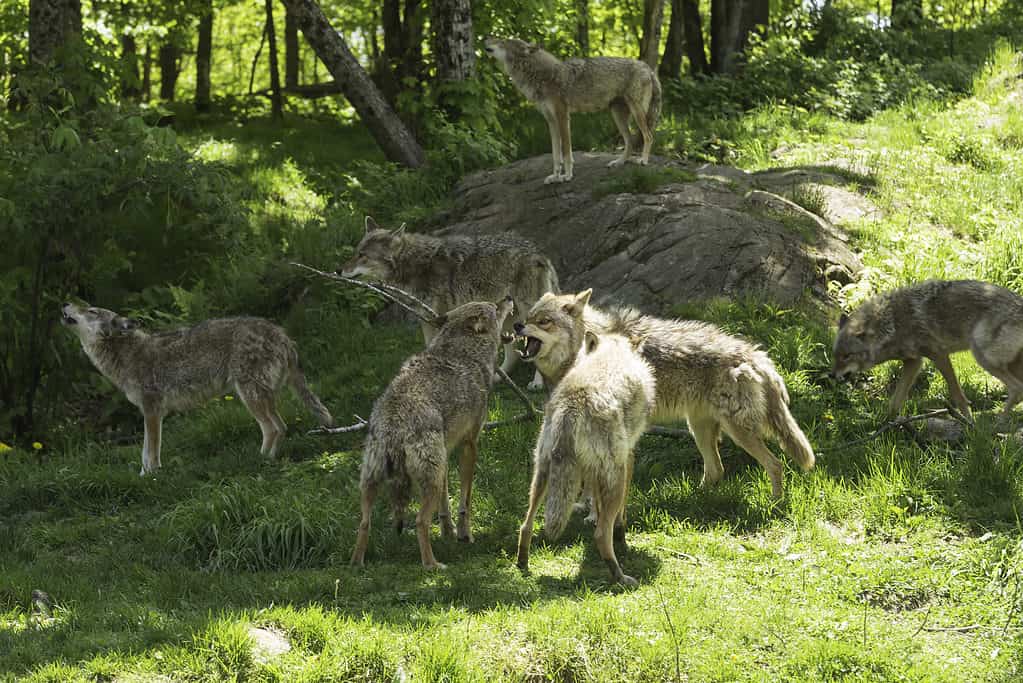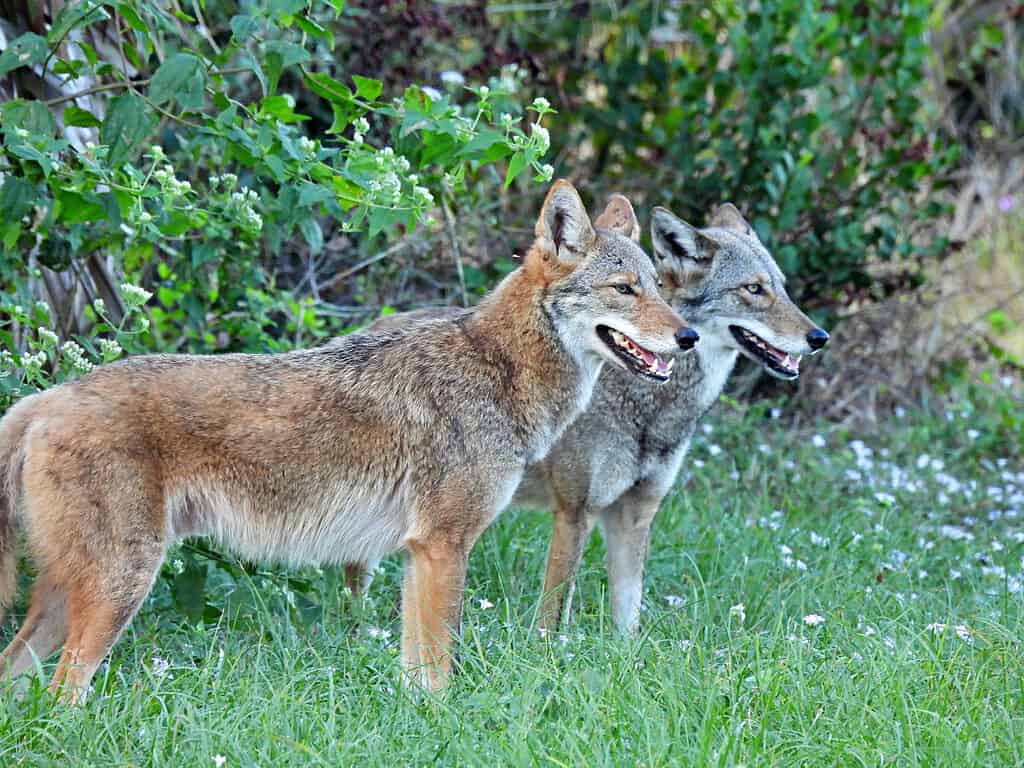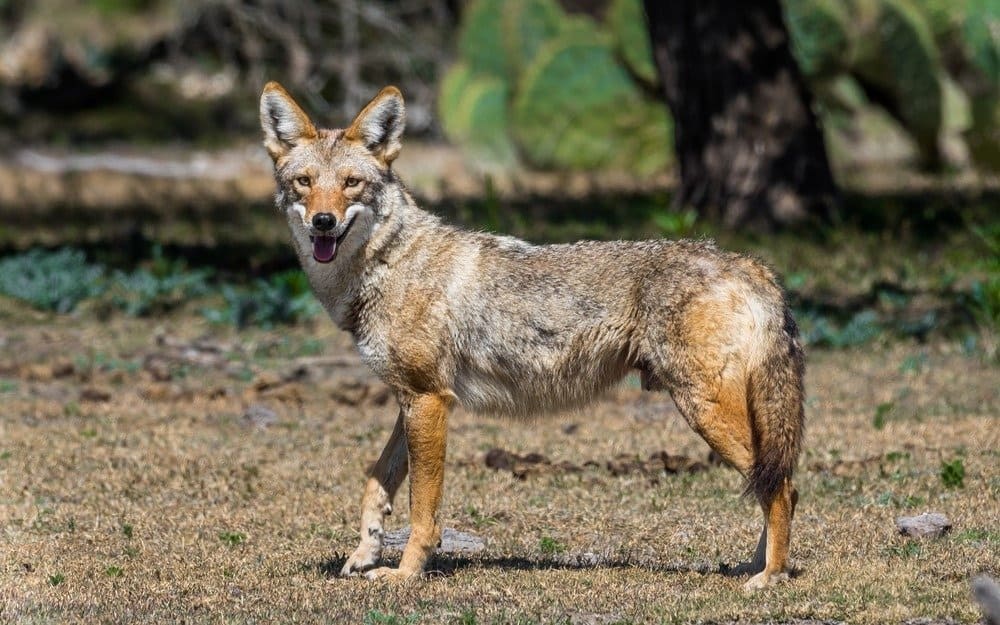You may think coyotes naturally roam only in the western United States, never venturing further east than the Mississippi. Contrary to popular belief, scientists have discovered coyote fossils in Florida that date back between 2.6 million to nearly 12,000 years ago. The red wolf initially eradicated and limited coyotes from returning to Florida, preventing them from traveling east. But following the decimation of the wolf’s habitat, coyotes slowly started returning to the state in the 1970s.
These resourceful animals are now commonly found in all of Florida’s 67 counties, and the state’s conservation departments have officially declared them as “naturalized” parts of Florida’s ecosystem. While Florida residents may find it concerning to suddenly encounter a coyote, especially in an urban environment, it’s nothing much to worry about. These wild canines are largely misunderstood creatures and are much more fearful of humans than we are of them.
Read on to learn more about coyotes in Florida, their population size, and what to do if you encounter one.

©Josef Pittner/Shutterstock.com
Why are Coyotes in Florida?
Coyotes ventured into northern Florida in the 1970s and slowly made their way throughout the state. Though they only returned to Florida a few decades ago, environmentalists have welcomed coyotes as important participants in the state’s natural ecosystems. Coyotes previously could not travel west of the red wolf’s eastern US territory. The red wolf was driven north by human-influenced habitat destruction, leaving room for coyotes to return east.
Researchers estimate that there are approximately between 0.2 to 1.2 coyotes in every square mile of Florida. That means there are between 13,000 and 70,000 coyotes in Florida, though the exact population size is still unknown. In the last 50 years, coyotes have integrated well into Florida’s ecosystem. Their presence helps to control invasive populations, maintain bug and small rodent species, and preserve native floral and fauna.

©iStock.com/passion4nature
Where in Florida are Coyotes?
Coyotes have been recorded in all 67 counties in Florida, with spottings happening at an increasing frequency. In fact, the Florida Fish and Wildlife Conservation Commission has a live tracker that maps where tipline callers have reported coyote sightings in real-time. A quick glance at the map shows that very few areas in Florida haven’t had a coyote trek through.
Coyotes can adapt to almost any environment, making their homes in urban, suburban, and rural landscapes where they find food. They commonly form dens out of ditches or hollowed logs or will adopt artificial structures as shelters in a pinch.
These wild canines are also territorial: a pair will establish a residence between 1,500 to 12,000 acres depending on available food and other factors. The couple shares the area with other family members and protects it from intruding packs. This territorial behavior makes coyotes challenging to eradicate: if one pack leaves, another will quickly stake out and adopt its place. Additionally, newly moved-in packs will produce more pups per litter to establish a more comprehensive family group to patrol its territory.

©Sam Carrera/Shutterstock.com
What to Do if You See a Coyote
If you encounter a coyote in Florida, there’s no cause for concern. They’re a natural part of Florida’s wildlife and are much more afraid of humans than we should be of them. The only time to call your local wildlife department is if you notice one acting oddly, such as approaching humans or otherwise showing little fear of people.
To minimize recurring encounters with a coyote, such as discovering one wandering repeatedly around your yard, you can employ methods to “haze” individuals to make them avoid the area in the future. Waving your arms around, making yourself appear more massive, and making loud noises serve as potent coyote deterrents.
Small air horns or walking sticks also make scary noises that help scare away unwanted visiting coyotes. Make sure only to stop making the noises once the coyote has entirely left the area, establishing that the fearful noises are associated with their presence. Motion-sensing sprinklers and lights are suitable and automatic devices that can keep coyotes away from your home.
When out and about, there are a few steps you can take to protect children and small pets from coyotes. If one approaches a child, shout and move towards the coyote, then grab the child and slowly back away. Never run from or turn your back on a coyote. Keep any small pets safe by walking on a short leash – less than six feet long – when outdoors, and never leave them unsupervised.
Up Next
- Red Wolf vs Coyote: What Are the Differences?
- Coyote Den: Where Do Coyotes Live?
- Coyote vs. Wolf: 6 Key Differences Explained
The post Coyotes in Florida: How Many and Where They Live appeared first on AZ Animals.
from Animal News, Facts, Rankings, and More! - AZ Animals https://ift.tt/ag3z2Bn